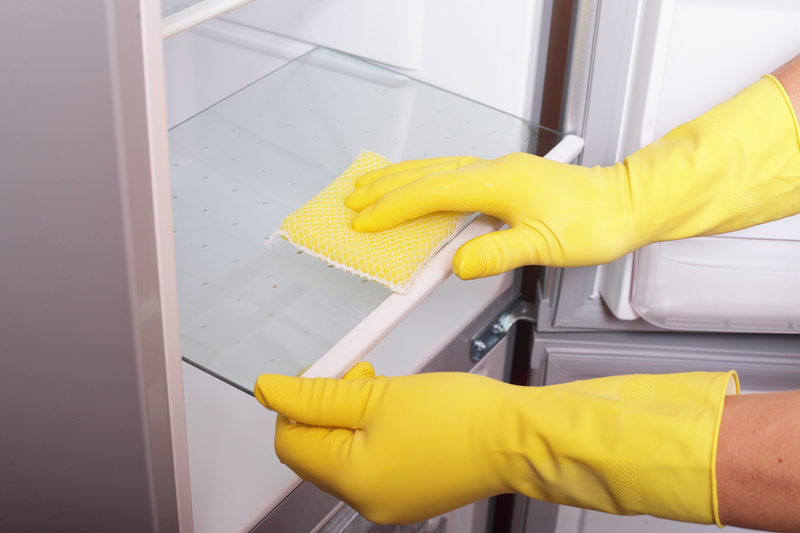The Ultimate Guide to Removing Limescale in Toilets
Posted on 28/05/2024
Limescale is a common problem that many homeowners face, especially in their toilets. This build-up of hard water deposits can not only make your toilet look dirty and unhygienic, but it can also cause damage to the toilet's plumbing system if left untreated. Removing limescale may seem like a daunting task, but with the right tools and techniques, it can be easily tackled.
In this ultimate guide, we will discuss everything you need to know about removing limescale in toilets - from its causes to effective methods for removal. So let's dive in!
What Causes Limescale Build-Up in Toilets?
Before we get into how to remove limescale, it's essential to understand what causes it in the first place. Limescale is formed when hard water evaporates, leaving behind mineral deposits such as calcium and magnesium. These deposits then stick to surfaces, including your toilet bowl and tank, creating the unsightly build-up we all dread.
Hard water is present in many areas and is caused by high levels of minerals in the water supply. As the water travels through pipes and fixtures, these minerals leave behind traces that accumulate over time. If not regularly cleaned, these deposits harden and form limescale.

Tips for Preventing Limescale Build-Up
Prevention is always better than cure when it comes to limescale. Here are some tips to help reduce or prevent its build-up in your toilet:
1. Use a Water Softener: Installing a water softener can significantly reduce the amount of limescale formation in your toilet. It works by removing the minerals found in hard water before it enters your plumbing system.
2. Regular Cleaning: Regularly cleaning your toilet will prevent mineral deposits from hardening and forming limescale. Use a mild cleaner or white vinegar diluted with warm water to scrub away any build-up.
3. Keep Your Toilet Dry: After using your toilet, make sure to dry the surfaces with a towel or use a squeegee to remove any excess water. This will prevent any mineral deposits from forming.
Effective Methods for Removing Limescale
If you already have limescale build-up in your toilet, don't worry. Here are some effective methods for removing it:
1. White Vinegar: As mentioned before, white vinegar is an excellent natural cleaner that can effectively remove limescale. Simply pour it into the toilet bowl and let it sit for a few hours (or overnight if necessary) before scrubbing the surface with a brush and flushing. The acidic properties of vinegar will dissolve the limescale and leave your toilet sparkling clean.
2. Lemon Juice: Like white vinegar, lemon juice also has natural acidic properties that can break down limescale. Squeeze the juice of one or two lemons into the toilet bowl and let it sit for several hours before scrubbing and flushing.
3. Baking Soda: This household staple can do wonders in removing limescale build-up. Mix equal parts of baking soda and water to form a paste and apply it to the affected areas in your toilet. Let it sit for about 30 minutes before scrubbing and rinsing with water.
4. Chemical Cleaners: If natural methods don't work, there are various chemical cleaners available on the market specifically designed to remove limescale. However, be cautious when using these products as they can be harsh and may damage your plumbing system if not used correctly.

Pros and Cons of Different Methods
Each method mentioned above has its pros and cons, here's a quick breakdown:
- Natural methods such as white vinegar, lemon juice, and baking soda are safe to use, affordable, and non-toxic.
- Chemical cleaners may be more potent in removing limescale but can be harmful to the environment and your health.
- Water softeners are a long-term solution but can be expensive to install.
- Regular cleaning and drying may prevent limescale build-up, but it requires constant maintenance.
The Takeaway
Removing limescale in toilets may seem like a daunting task, but with these effective methods and preventative measures, you can easily tackle the problem. Remember to regularly clean your toilet and keep it dry to prevent further build-up. And if natural methods fail, opt for chemical cleaners, but use them with caution.
In conclusion, limescale build-up in toilets is a common problem caused by hard water. Prevention is key, but if already present, natural remedies such as white vinegar and lemon juice can effectively remove it. Chemical cleaners should only be used as a last resort. Happy cleaning!





